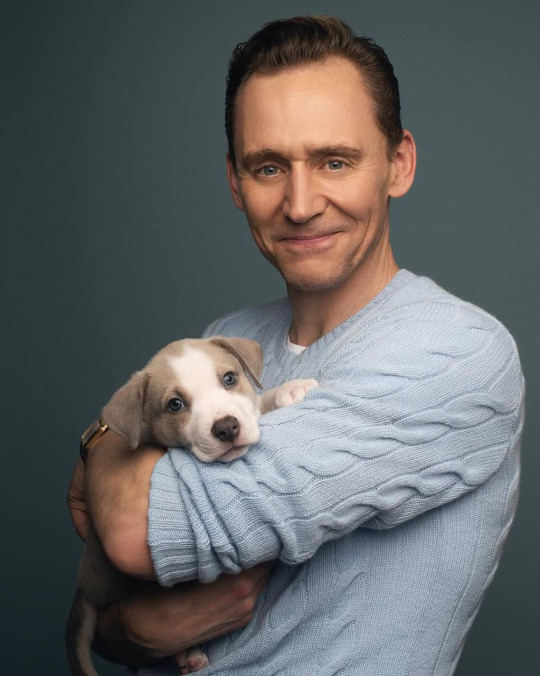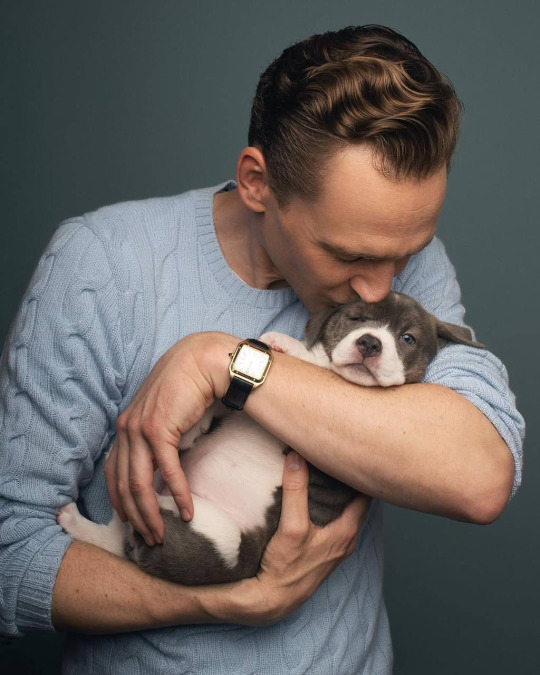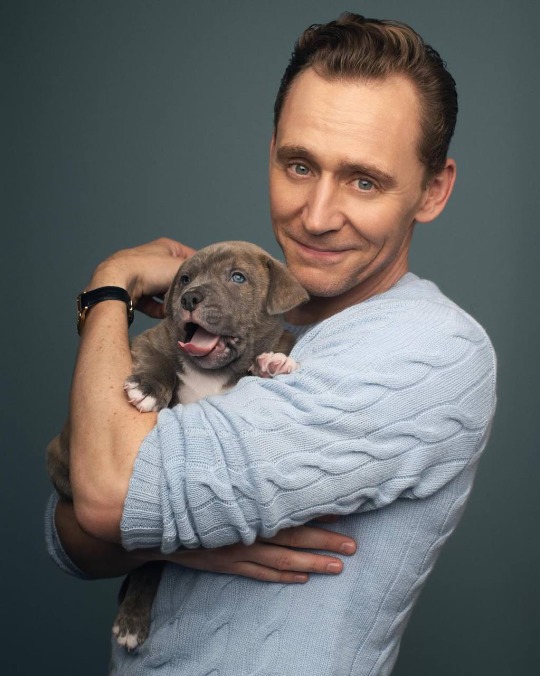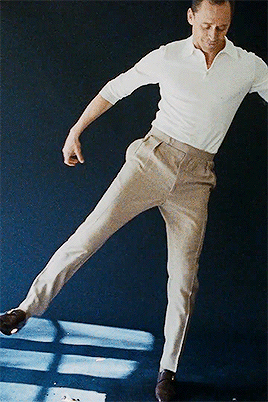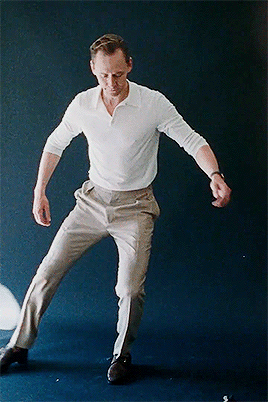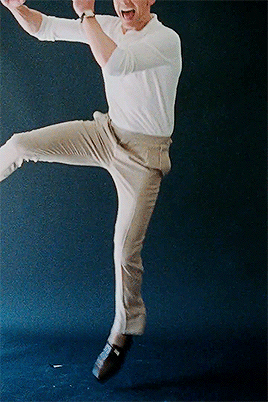I wanted to figure out if Hiddles had blue eyes or green eyes and did a tumbr search....Fell down the rabbit hole..........Lurked around as Matsurimai and then decided to make a Hiddles blog.
Don't wanna be here? Send us removal request.
Text

Miller is describing the Trumps.
Foreign-born mothers with their firtst-gen kids. Trump kids lived in foreign-born households.
345 notes
·
View notes
Note
Tom’s Wikipedia page is pretty clear that they are married!
Oh wow the stans running that page actually let that through

14 notes
·
View notes
Text



























Tom was a last minute addition to the England team in a management roll at sunday's Soccer Aid for UNICEF football match.
12 notes
·
View notes
Text











Tom Hiddleston on filming Tenzing in Nepal ⛰️
201 notes
·
View notes
Text






Tom Hiddleston by Luke Fontana 2025 for BuzzFeed
778 notes
·
View notes
Text




Zawe Ashton attends dinner to honor Bernardine Evaristo (x)
49 notes
·
View notes
Text




Zawe Ashton attends dinner to honor Bernardine Evaristo (x)
49 notes
·
View notes
Text
A creeping sense of dread washed over Tom Hiddleston as he read the script for “The Life of Chuck.” He knew that its director, Mike Flanagan, wanted him to play Chuck Krantz, or, as the actor put it, “a harbinger of the apocalypse.”
But as he read on, there came excitement, a thrill. Chuck has a secret: He loves to dance.
Hiddleston, 44, loves to dance, too, a discovery he made when he was a teenager. “It was instinctive,” he said in a recent interview via video. “But it was only for me. I didn’t train, I wasn’t in dance classes.”
He went out dancing with friends. The 1990s were his time. “My love for Daft Punk,” he said of the electronic music duo, “is enduring and real.”
While he is foremost an actor, Hiddleston has become something of a dance ambassador. Lean and elegant, he has the air of Fred Astaire. His limbs are long, but they don’t slow him down; his feet are fast and accurate. Known for his spontaneous eruptions of dance joy — on talk shows and the red carpet — Hiddleston is a natural with rhythmic acuity and, at times, riveting attack. His dancing, whether smooth or sharp, is instinctive and shaped by coordinated fluency.

Tom Hiddleston discovered he loved to dance as a teenager: “But it was only for me. I didn’t train, I wasn’t in dance classes.”Credit...Ariel Fisher for The New York Times
What’s apparent is the pleasure he gets from it: Certainly, there is Hiddleston the man, but also discernible is the boy within. There is innocence and fearlessness in his love of motion. An avid runner, Hiddleston said, “I’ve always thought of running as dancing forward.”
There’s no faking of abandon. “Tom dives into movement, and he’s not afraid,” the “Chuck” choreographer Mandy Moore said. “It’s like heart first, head second. He is a very smart mover, and he does think about where his body is in space. It comes across that he is not thinking about it — that it just comes from feeling.”
The dance in “Chuck” is long and complex — it lasts around six minutes — but Hiddleston performs it as though he’s making it up on the spot. As he read the script, he envisioned it as an explosion of emotion. “I just wanted it to fly, “ he said. “I wanted it to be the most vital and dynamic expression of joy and movement and freedom that it could be.”
In the film, Chuck is a mystery at first, appearing on billboards that read, “Thanks, Chuck!” accompanied by a photo and “39 GREAT YEARS.”
The story, mirroring the structure of the Stephen King novella on which it’s based, unfolds in three acts that travel backward in time. In the first, when the billboards appear, the planet is on the brink of extinction. Gradually it becomes clear that Chuck isn’t well.

Hiddleston with Annalise Basso in the dancing scene from “The Life of Chuck.”Credit...Neon
When the dance happens in the second act, Chuck, a businessman, is on a walk. He hears the beat of a drum played by a busker (Taylor Gordon). Instead of continuing on, he halts, dropping his briefcase. His hips give a soft, subtle sway. With two raised fingers, he wags them to the beat and takes a few steps back before stopping on a dime, switching direction and dashing off a quick pirouette.
It’s so unexpected that what follows is a beat of silence and stillness — a prelude to the dance, which, Hiddleston said, is “the last truly alive moment of Chuck’s life before his illness takes hold.”
“This is a moment of defying gravity,” he added.
And defying, for a few minutes, his fate. The number seems like a spontaneous release, but as we learn in Act 3, it dates to Chuck’s early years learning dances in the kitchen with his grandmother. As she cooked, she taught him jazz, swing, salsa, samba, Bossa nova, polka — styles that Hiddleston glides through in his dance.
He slips in a moonwalk, too. And there are signatures from his own dancing — things, Hiddleston said, his family would recognize, like a kind of shuffle. “My body just wants to do it, and I don’t know where it comes from,” he said. “My legs fly out from underneath me. And then I cross and they fly out and cross again.”
In the film, the dance draws a crowd, as all good street performances do. Janice (Annalise Basso), a young woman who happens upon the scene, is swept into the choreography as Chuck’s partner, and together, they fly. But during much of the duet’s creation, they weren’t even in the same room together.
Hiddleston was in London, and Moore and Basso were in Los Angeles. With the help of an associate, Moore started a training program with him, she said, “to work on the basics of jazz, some ballroom techniques, cha-cha, some salsa, a little bit of old school jazz just to see how his body moves.”
She choreographed by sending videotapes of movement phrases, but it wasn’t until they got in a studio together in London that the dance could be shaped and refined. “It was such a space of freedom and exploration,” he said. “Mandy believes so powerfully in the transformative power of dancing. And I felt so safe with her. She said, ‘You’re playing Chuck, but Chuck is you.’”
In many ways, that’s the key to his effervescent performance: You see the person inside of the dancer. In Hiddleston’s case, it’s the clarity of his connection with Basso and Gordon — really, the number is a pas de trois — and his delight as he finds his flow. By the end of the shoot, which took place in the Alabama heat, holes had burned into the soles of his shoes.
“I’m only approximating what a professional dancer feels, which is like after four days of doing it, I thought there was a kind of economy to it,” he said. “It was like my body was accustomed to the routine, and so there was a sort of precision there that maybe wasn’t there at the beginning. I found it easier to make big extensions and bigger shapes and for it to feel a bit looser without sacrificing the form. As we were coming to the end, I was like, ‘I wish I could do this every day.’”
The dance has a weight to it, which is a shift from some of his most identifiable performances. In 2013, Hiddleston appeared on “Chatty Man,” Alan Carr’s talk show, with two other guests who started rapping. Carr asked Hiddleston if he would do a rap, too. Instead, he offered to dance. “They put some music on, and I just did a little dance, like completely spontaneously,” he said. “I remember my microphone pack fell off from the belt of my trousers.”

“As we were coming to the end” of shooting the scene, Hiddleston said, “I was like, I wish I could do this every day.”Credit...Ariel Fisher for The New York Times
He thought nothing of it, but years later, it went viral. In terms of coverage, there was, “an extraordinary energy around it,” he said.
“I actually became a bit self-conscious about it. As if it was something that people kind of wanted me to do.”
Eventually, he got over his discomfort. “Maybe I’ve lost that because I’m getting older,” he said.
And dance has continued to surface in his acting life. Recently he appeared in Jamie Lloyd’s London production of “Much Ado About Nothing” in which the cast dances: “We were doing eight shows a week to these ’90s bangers,” he said happily.
But he knows that the message of “Chuck” — and its dance — is serious: “Its message is, do whatever gives you that feeling of being alive,” he said. “Dance, do math, paint, write, run, play the piano, sing, skateboard, surf, climb mountains, whatever it is that gives you deep joy, that is a transformative force in life. Life is brief and precious, and it needs to be grabbed with both hands. It takes courage to follow the joy and to find it.”
He continued, “For Chuck, it’s dancing. And to some extent, for me, it’s dancing. So dance while you can.”
82 notes
·
View notes
Text
Video 2 from the NYT article, via Havanesemom
97 notes
·
View notes
Text
DESPITE THE FACT that Tom Hiddleston plays the titular role of Chuck in the new film The Life of Chuck, he was only on set for five days. And despite the fact that The Life of Chuck is written and directed by Mike Flanagan (a modern horror master best known for his terrifying limited series on Netflix) and based on a novella by Stephen King (whose name is practically synonymous with the morbid and the scary), Hiddleston's time wasn't spent screaming, fighting off evil clowns, or navigating a post-apocalyptic world.
No, Tom Hiddleston spent most of his time on The Life of Chuck dancing.
"I learned how to moonwalk, and then we were off to the races," Hiddleston tells Men's Health on a Friday evening in late May.
Despite what the names involved might have you think, The Life of Chuck really isn't a horror movie at all. Instead, it's a story about life and death, a look at the impact small moments in one life can have on another, and the things that stand out in a memory when it all comes to an end. And as the film slowly but surely lays out, a number of those moments in the life of a regular guy named Chuck Krantz (played by Hiddleston with a gentle, compelling kindness) come when he's given an opportunity to dance.
Chuck isn't someone you'd expect to start busting moves, though; he's an accountant in a suit holding a briefcase. But in Hiddleston's most intensive scene in the film (which took up four of his five days on set), he put far more on display than just his newly-acquired moonwalking skills. The sequence, which Flanagan had originally composed by drummer The Pocket Queen (who appears in the scene) and choreographed by Mandy Moore (not that Mandy Moore, but rather an acclaimed professional who worked on movies like La La Land), combines elements of jazz, swing, salsa, cha-cha, Bossa Nova, and Polka dancing; the Moonwalk was part of a freestyle element.
Before production, Hiddleston had a call with Moore to discuss the sequence, who then set him up with assistant choreographer Stephanie Powell in London. The two would practice for a few hours every day, and getting to the majestic point of the lengthy dance featured in the film wasn't all smooth sailing.
"I found out that jazz and swing were very close to home, and Bossa Nova was a little further away, so I had to work on that," Hiddleston says. "Some things come naturally to every human body and other things don't. Some people can kick a ball and it just goes in the goal, and some people can just pick up a dance step. But it was such an education, because dancing is completely instinctive. It's not intellectual. It's not a brain thing, it's just a body thing, and the body responds."
If you're mainly familiar with Hiddleston from his role as Loki in the Marvel Cinematic Universe, you'll be shocked by what he achieves in The Life of Chuck. The film is split into three acts, and Hiddleston only significantly figures into the second. But despite not having a massive amount of screen time, he's the face of the character; everything we know about Chuck brings his image to mind, and the impact he makes in that middle section is enough to last for the entire 111-minute runtime.
As The Life of Chuck hits theaters, Men's Health had the chance to catch up with Hiddleston to talk about bringing a story about life, death, and mortality to the screen, how his Marvel career may have inadvertently prepared him for learning that intense dance sequence, and a tease toward his next adventure as Loki.
MEN'S HEALTH: I have to tell you—I was talking to your old Loki friend and co-star Owen Wilson yesterday for a different story.
TOM HIDDLESTON: Amazing. How was that?
MH: He was great. Very fun, and very much how he seems on screen.
TH: He's the best. He's actually the best. He's one of the great men. I love that guy.
We've been through many, many times together. I know you've seen the work, but we made Loki in the pandemic, and so sometimes he was my only human interaction, and I was the same for him. We've talked about pretty much every subject under the sun.
MH: It's a very specific type of bond. Speaking of bonds, you seem to have drawn a very close connection to your character in The Life of Chuck after just a short period of time on set. Why did you want to get involved with this movie?
TH: Honestly, I read the script over Easter of 2023, and I remember exactly where I was. I read it in one sitting, and I was overwhelmingly moved by it. The wisdom in it really struck me.
I understood what Mike's extraordinary screenplay and Stephen King's short story was trying to say, which is that every seemingly ordinary human life is magic. And that inside the soul of every human being is an internal world of connections, both real and imagined, connections to people we love, to experiences we've shared, to memories we've made. And that in the last hours of our lives, as much as our lives are often full of struggle and grief and loss and pain, what remains is love and those moments which might seem small, but actually create a kind of constellation of connection. I found that so profound, and I really related to it.
I really relate to the idea that no human being is one thing. We're not just the job we do or the role we have in our family or our group of friends. We all have an internal world of infinite possibilities, and maybe when we're children, those possibilities feel closer. But as we get older, it's easy to allow those possibilities to start to feel reduced. The great joy of being alive, though, is that you're always alive until you're not. There was something about the soul of this film. It was about life and the consideration of what life means, especially as life comes to an end. And maybe that's only when it comes into focus.
Hiddleston isn’t in The Life of Chuck much, but his presence is felt throughout the movie.
MH: People tend to push away themes of life and death, and this movie is eager to tackle them head on. And almost ironically, because it's by Stephen King, by the end it's something that's not even scary to think about.
TH: I don't mean this to sound morbid, but any consideration of death inspires a consideration of life, and what the purpose of life is. Any human life contains this great range of experience, and it takes great courage to hold onto what's good when it feels like the world is falling apart.
Life is brief and precious and often fragile, and it's our privilege to grab hold of it with both hands. If you're in a position where you're able to, you should do whatever it is that makes you feel alive. For Chuck, it's dancing. He's an accountant. He's Mr. Businessman in a business suit walking to the business conference and staying in the business hotel, but suddenly he remembers he's also a dancer, and that gives him joy.
When I was making it, I kept thinking, "I wish everybody could feel the urgency of that." That's the uncertainty of being alive—we wake up every morning and we don't know the day or the date that our lives will come to an end. We live in that uncertainty all the time, and we do the best we can with what we have. But whatever inspires that feeling of joy and that feeling of connection, whether it's math or dancing or football, do it with everything you have. Because in the end, that's all that remains.
MH: Did you have any specific influences approaching this performance?
TH: It was something I really took from the script and I thought a lot about. I thought a lot about Chuck's childhood and how it would have informed the man he became. He was someone who was talented at math and good with numbers, but also this really gifted dancer, and it gave him joy, and it connected him to his grandmother.
But he also had these very early experiences of loss. He lost both his parents very young, and he lost the sister he never had at the same time. And he had all of those experiences of the joyful and beautiful relationships he had with his grandparents, and the films he loved to watch as a kid. I thought about the films I loved that were similar, like all the great movies of Fred Astaire and Ginger Rogers, the Gene Kelly movies, Singing in the Rain, An American in Paris, Cover Girl.
I thought about my own love of dancing, which I've always loved to do, but just as a guy with my friends; I was hoping I could synthesize all these things. I knew the dance sequence had to be this explosion of joy and spontaneity, but I also wanted it to be a great tribute to those influences. I was doing my bit of Gene Kelly and doing my bit of Fred Astaire, even if I don't move with quite their level of elegance and grace.
MH: I'd say you came pretty close. How did trying to prepare for that kind of intense, lengthy dance sequence compare to past experiences training for roles?
TH: It's so interesting. Over the years as a performer, the thing I've learned about movement is that agility is your friend. Having a baseline range of motion and being able to be adaptable is something I've really valued. If I'm training, I hope I don't get stuck in a singular way of doing things, because the body loves being surprised.
The baseline of my routine is running, because it keeps my stamina up, and it keeps me on an even keel. Practicing for this gave me such enormous and lasting respect for dancers, because truly great dancers are among the most elite athletes in the world. There's such extraordinary strength and stamina and flexibility and precision required. So in doing the training, I was like, "This is super intense." It's different from combat training in a way, and it's certainly different from training if you're trying to build a body that doesn't come naturally. But in lots of ways it was quite similar.
In my experience of playing Loki particularly, some of that stunt choreography is quite similar to dancing. In some of those really epic confrontations in the Marvel movies, often we're doing stuff on wires, and Loki's spinning and twisting. And his whole thing is that he's like a mercurial element. You can't pin him down. And so often in the confrontations with Thor or with the Avengers, the fight choreography was more akin to dancing than fighting. In a way, some of that prepared me really well for this. It's just that Loki doesn't do his fights to someone standing behind a drum kit and whacking out a Bossa nova.
MH: Although you do get some fun music stuff in Thor: Ragnarok.
TH: Yes, that's true—Led Zeppelin!
Hiddleston, second from the left, with Mike Flanagan, Karen Gillan, and Chiwetel Ejiofor.
MH: One of Mike Flanagan's signatures is that he uses reuses many of the same actors frequently. Would you want to work with him again?
TH: 100%. I found his leadership extraordinary. He creates such an atmosphere of trust. He innately understands that when you're directing a film, you're conducting an orchestra of people all bringing their own immense skill and imagination to the table. And it was extraordinary to be on that set and to be surrounded by so many people who've worked with him time and time again and there's a shorthand. And to be welcomed into that family, I had the most wonderful time. He's so impeccably prepared, but also that preparation gives him great freedom on the day because he knows what he's looking for, but he's open to being surprised by what he doesn't know.
My time on this film was relatively short—I was filming for just one week. And it was the first week of principal photography, so I left and handed the baton over to Chiwetel Ejiofor and Karen Gillan, and then they handed the baton over to Mark Hamill and Benjamin Pajak and Mia Sara. My lasting feeling as I flew home was just of immense gratitude for a really joyful experience. It was a very happy time, It was really good people telling a story that we all felt really passionate about. So, yeah. Hoping it's not the last.
MH: You mentioned Karen and Chiwetel, who have also been in the Marvel Cinematic Universe, and you've already been announced as part of the cast for Avengers: Doomsday, which should be a major 2026 movie event. Any chance we'll see a Life of Chuck reunion there?
TH: It's a great question, and it's one I don't know if I'm allowed to answer, truthfully. But you are correct in that I will appear in Avengers: Doomsday. That I can confirm. And that I'll be working opposite some other actors in that film, that I can confirm. I can't tell you which actors.
It's very exciting. I have loved playing Loki. Loki's been a companion for a long period of my adult life. Loki's a character of such depth and range and complexity, and it never feels like the same experience. It always feels new, and this one will be new in its own way. I'm grateful that I'm still on the team.
This interview has been condensed for content and clarity.
57 notes
·
View notes
Text
New!! Tom Hiddleston at a puppy interview for Buzzfeed Celeb! So cute!!!
https://youtu.be/AGJYDZtvrFo?si=FzbBJhXGiKA44OPC






47 notes
·
View notes












